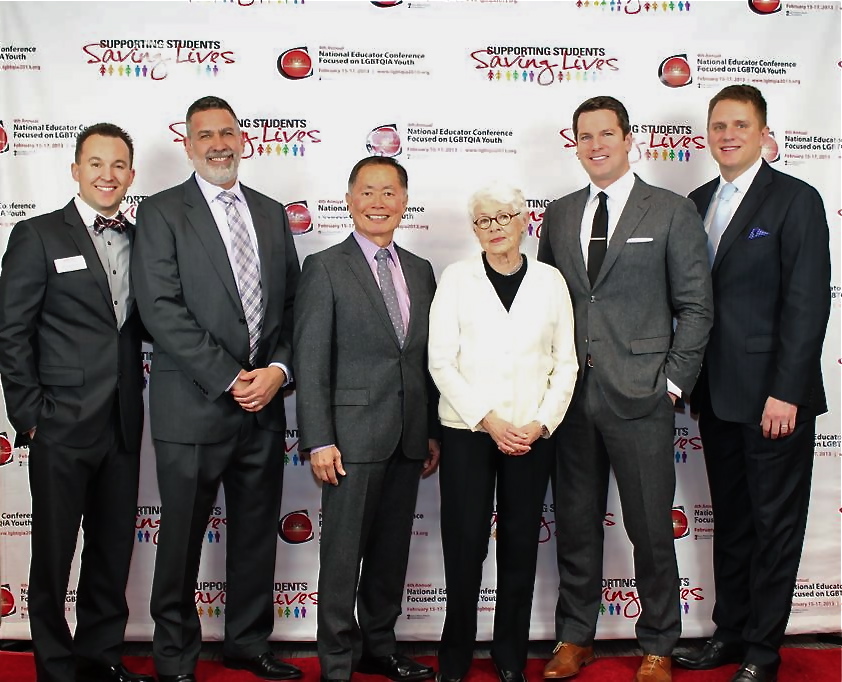
Ed. note: This is cross-posted from the US Department of Education Blog
This past weekend in San Diego, I had the opportunity to participate in the 4th Annual National Educator Conference focused on creating safe, supportive, and inclusive schools for lesbian, gay, bisexual, and transgender (LGBT) youth. A goal of the conference, presented by the Center for Excellence in School Counseling and Leadership (CESCaL), was to bring together education leaders and LGBT experts to empower and provide educators and school personnel with the knowledge and skills necessary to create safe, welcoming and inclusive school environments for all youth, regardless of their sexual orientation.
Additionally, the conference focused on providing educators with the tools and resources to prevent and respond to bullying of LGBT youth, as well as empowering them to make the changes in their schools to make sure all kids are safe and thriving. I met with so many amazing educators; it truly was empowering.
Safe schools are not only free from overt forms of physical violence or substance abuse, but work proactively to support, engage, and include all students. Unfortunately, too many schools are not safe for LGBT youth. According to GLSEN’s National School Climate Survey, nearly 8 out of 10 LGBT youth were harassed at school. We know that students who are bullied are more likely to have depression, anxiety, and other health concerns, as well as decreased academic achievement and participation. When students don’t feel safe, they are less likely to learn and more likely to give up on school altogether. Unfortunately, we also know that LGBT youth are disproportionately subject to discipline practices that exclude them from the classroom, and make up close to 15% of youth in the juvenile justice system.
Given these statistics, it’s not surprising that LGBT youth are at an increased risk for suicidal thoughts and behaviors, suicide attempts, and suicide. We need to ensure that educators have the tools and resources to not only protect LGBT students from harassment and discrimination, but to ensure that they thrive in schools, not drop out!
One of the students who attended the event came with his high school teacher from Washington State. He had reached out to the conference organizers after bullying in school left him feeling defeated and isolated. They attended with the hope that it would transform the student’s life in a positive way and enable his teacher to help and learn more to help other LGBT students. In a follow-up to the conference organizer, the student thanked Vinnie Pompei, the Project Director & Conference Chair, for the “awesome” opportunity to attend, and acknowledged that this is a great beginning to share information learned from the conference with students, teachers and others at his school.
Another student who participated in the conference said, “I get bullied every day. This started in 1st grade and I’m in 8th grade now. Suicide was an option…many times. [But] I’m not going anywhere…because I’m stronger than that.”
We need to work together and empower both students and teachers and make sure they have the tools to create changes in schools. I spoke with many educators who perceive stopping anti-gay bullying as risky and fear retribution. Teachers also need support in speaking out.
As I addressed the conference, I asked the individual educators to do four things to help improve the school experience of our LGBT youth.
- Create positive school climates for all students – this happens only through a deliberate, school-wide effort, and with the participation of families and communities.
-
Be proactive and visible to LGBT youth – they cannot know they are supported, valued, and appreciated, if the adults in the building aren’t there to tell them so.
- Identify “safe spaces,” such as counselors’ offices, designated classrooms, or student organizations, where LGBT youth can receive support from administrators, teachers, or other school staff.
- Encourage student-led and student-organized school clubs that promote a safe, welcoming, and accepting school environment (e.g., gay-straight alliances, which are school clubs open to youth of all sexual orientations).
- Understand student mental health issues. Everyone can play a role here; not only school counselors or nurses, but teachers and administrators that can identify warning signs, like sudden changes in behavior.
- And importantly – they are not alone. While educators play a critical role in providing support to LGBT youth, they can build partnerships with local health and mental health agencies, community based organizations, and child welfare. And, there are federal resources to provide guidance and information on how to make schools safe, supportive, and inclusive. For example, check out www.stopbullying.gov.
I would like to extend my deepest thanks to the courageous teachers who are working every day to make this happen. Thankfully, educators have the power to create change in their schools, supporting students and saving lives.
Michael Yudin is Acting Assistant Secretary for ED’s Office of Special Education and Rehabilitative Services


